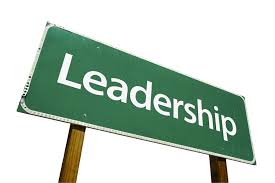Defining Compliance 2.0 — The CEO (Part 2 of 5)
 Do the right thing. It will gratify some people and astonish the rest. – Mark Twain
Do the right thing. It will gratify some people and astonish the rest. – Mark Twain
We all know the obvious – a CEO’s commitment to ethics and compliance is critical to the success of a compliance program. A CEo who stands up and speaks about the company’s culture of compliance is more than a breath of fresh air – it can be the lifeblood of a compliance program.
A Chief Compliance Officer either has the support of the CEO or does not. There is no in between in this area. If you work at a company where the CEO has a signed letter in the front off your Code of Conduct and a videotaped recording of him or her talking about the importance of ethics and compliance — you do not have a CEO committed to ethics and compliance. A CEO who is committed to ethics and compliance has to back up his or her words with real actions – not just directions and orders, but personal actions.
By definition, or to say it another way — a requirement for Compliance 2.0 is a committed CEO who devotes adequate time and attention to the ethics and compliance issue. The CEO sets the tone for the organization, sets expectations for senior leadership, holds everyone accountable for meeting ethics and compliance requirements, and is the most important communicator within the company to spread the message of an ethical culture.
Managers and employees, and other stakeholders, each look to the CEO to rank competing priorities. A CEO who leads with honesty, integrity, and compassion can easily translate the compliance message into real and valuable terms for managers and employees. Everyone looks to a CEO to set the tone for an organization, and the CEO has to step up to this responsibility.
A CEO who is committed to ethical business decisions will develop a management style that includes important constituencies, responds to important ideas and suggestions and communicates clearly the reasons for certain decisions and the vision for the company’s growth and sustainability.
Managers and employees value trust in their leaders. When they question this trust, managers and employees will quickly turn on corporate leaders. A culture of compliance can easily turn into a culture of distrust and fear. It is in those environments where employee misconduct will grow and systemic legal violations are likely to occur.
A CEO who builds a team with the same commitment to ethics and compliance will welcome the CCO to the senior management team meetings, recognizing the important contribution that a CCO can make to the business leadership team. A CEO who holds a CCO at arms length, floors away from the C-Suite, is only creating an atmosphere of distrust.
Managers and employees look to CEOs for leadership and examples that they can admire or even follow in their own work environment. A company with a culture of compliance will have lower rates of misconduct and higher rates of reporting of violations. A CEO who holds himself or herself accountable under the company’s Code of Conduct is setting an important example for everyone to follow.
 In the Compliance 2.0 model, the CEO is the real leader of an ethics and compliance program. Only the CEO can ensure that the company’s business managers and employees embrace the importance of ethics and compliance and commit themselves to the same standards as the CEO.
In the Compliance 2.0 model, the CEO is the real leader of an ethics and compliance program. Only the CEO can ensure that the company’s business managers and employees embrace the importance of ethics and compliance and commit themselves to the same standards as the CEO.
A compliance program is only as good as it is embedded in the company’s business culture. Having CCOs remind everyone about the importance of compliance is not a communications program, nor is it the foundation of a compliance program.
Words and actions define a compliance program. One without the other is not much of a program. Together, words and actions by the CEO, senior leaders and managers can bring about a demonstrated culture of compliance. In the Compliance 2.0 model, the CEO sets the stage for everyone to promote the company’s ethics and compliance commitment.
















1 Response
[…] Source: blog.volkovlaw.com […]